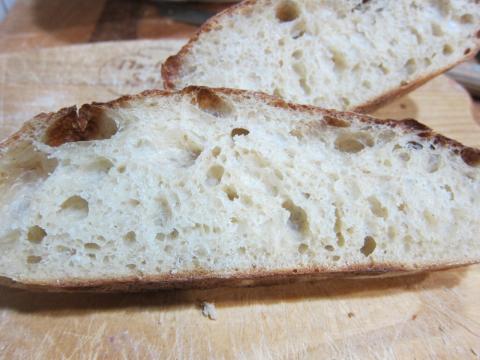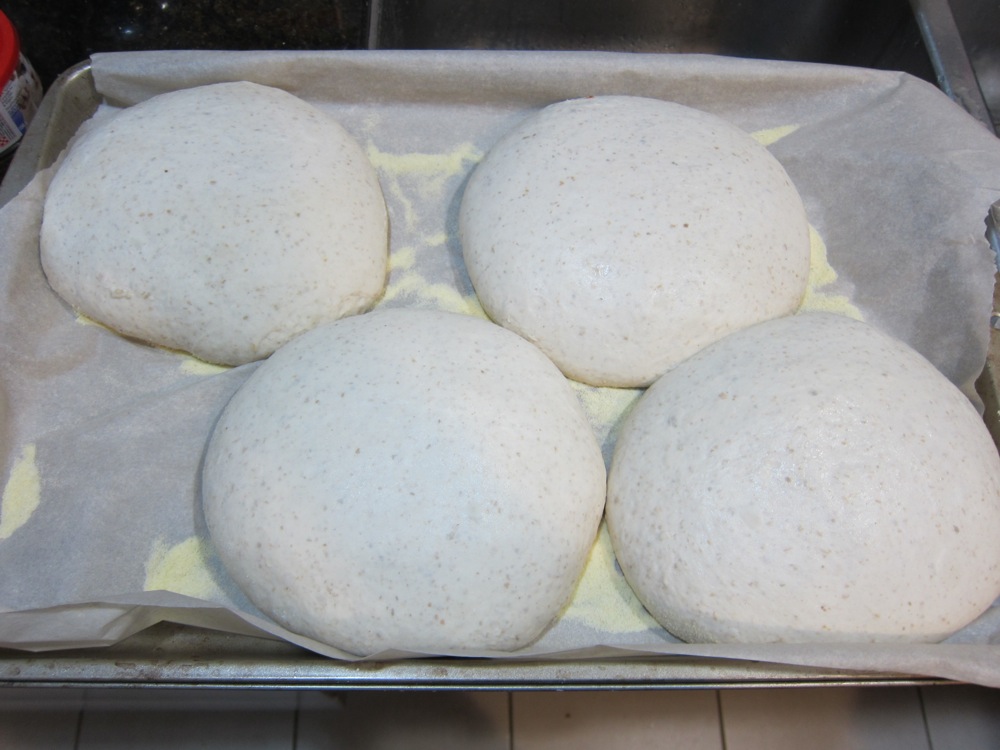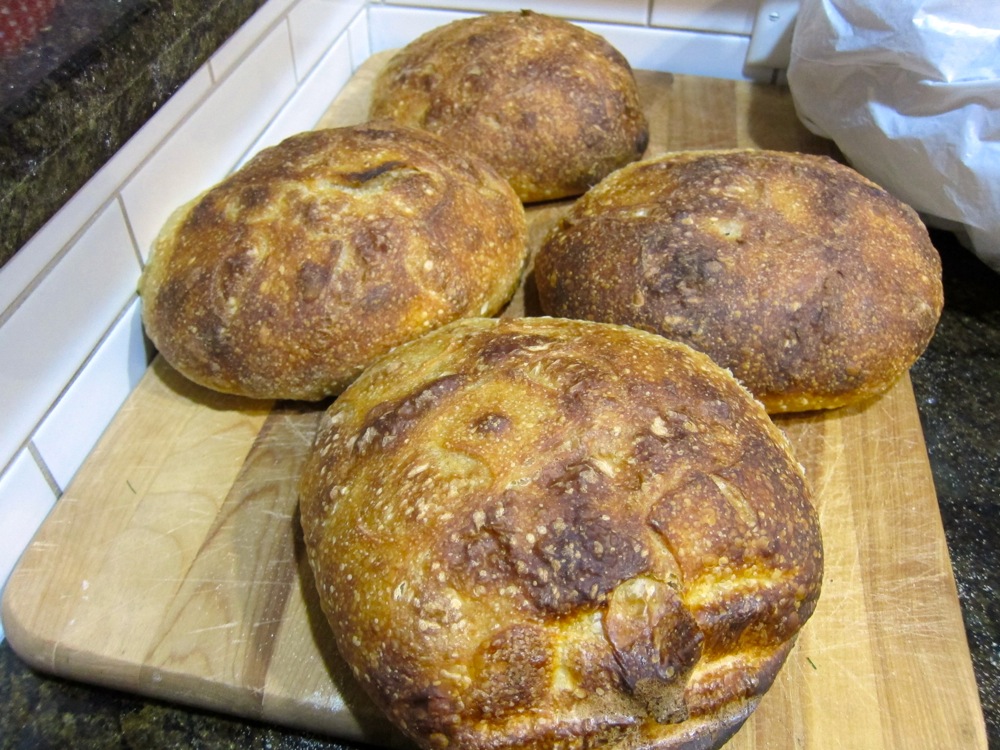
Super sour sourdough

I haven't baked with my starter in a couple of weeks, so Wednesday evening I fed my starter some rye flour and water. Thursday mid-day I made my dough (1kg bread flour, 20g salt, 730g water, "a bunch" of starter). It has turned cool again in Vancouver though and my dough was moving slowly, so I bulk retarded it overnight until Friday morning.
Our fridge is really cold so there was very little action overnight. I removed the dough from the fridge Friday morning and stretched and folded every couple of hours so the dough would warm evenly. By late-afternoon the bulk dough was starting to move and getting close to double in size, so I shaped the dough into boules. I was hoping to bake it later that evening, but it was moving slow enough that I decided to cover it and refrigerate it overnight again.

Saturday morning I removed the loaves from the fridge around 7am. Again, very little action overnight and even a bit of ice on the outside of one of the loaves. By 11 or so they looked ready to bake, so I tossed them in the oven, covering them with an inverted aluminum pan for the first 10 minutes or so.

As you can see, I accidentally squished the edge of one of the loaves with the aluminum pan, but the breads came our really good, really sour, as one would expect from such long, slow fermentation. Lots of blisters, too, which I like. They went really well with cheese, wine, and pasta e fagioli.


Comments
Hey nice sourdoughs Floyd. We were both in the sourdough zone this weekend. Mine did not turn out sour though, which is expected from a Tartine loaf. Enjoy those for the next few hours! ;)
John
Very nice blistered Crust, and a smooth cool crumb. So, Sour bread goes well with cheese? i suppose it should go well with mild cheeses?
-Khalid
We had some Danish Edam which, yeah, is quite mild and creamy. I thought it was a good fit.
A really sour sourdough dipped into a bowl of pasta e fagioli. Italy is alive and well.
I think the coldness had a great effect. Beautiful loaves!
should make for a more sour bread that is very tasty. An open, glossy, crumb with brown, blistered crust meant this was a complete and total success. Those Labs really slow down their reproduction in the cold but they like it 3 times better than the yeast does which equals more sour. Nicely done Floyd.
It seems you accidentally stumbled across the debated technique of my "Super Sour" From the sound of it your retarding is a bit colder than ours but other than that its the same timeline. Will you attempt this again?
Josh
Will you attempt this again?
The dough leads, I just follow, but... yes, if I have room in the fridge and I find myself with a dough that is developing slowly like this I will probably try this again. Better to slow it down and end up with a really sour sourdough a day later than a pale, heavy, underdeveloped loaf on the day I'd originally planned to bake.
Guys, I have never baked sourdough bread before but it is one of my favorites so please would you explain what a (quote) "bunch" of starter is........ Better still would someone please give me a very BASIC recipe to begin my quest with....... We all have to start at the begining and I really do want to make this journey!
Yeah... sorry about that, I'm terribly lazy about measuring starter.
I'd guess it was about a cup of ripe starter? I didn't measure it, just scooped it out of the bowl, but it was quite a bit, actually.
I think the rule is to never have more than 1/3 of the total flour weight of a loaf come from the starter. Counter-intuitively, you tend to get a better (though slower) rise if you scale that back quite a bit. One of my favourite recipes, a miche I used to bake quite a lot, had 1kg flour but only 20g of ripe starter, which is about a tablespoon. It then took about 18 hours to rise. I think if you look around at other folks' formulas here, you'll find quite a few of them only have around 10-15% of the flour weight in the ripe starter.
If you do start sourdough baking, my advice is 1) "it doesn't take much" and 2) "give it time." It isn't like regular commercial yeast where you can just double the yeast and then count on double the rise (or half the time).
If you are careful enough about maintaining regular feeding schedules, letting the dough rise at a set temperature, and measuring the ingredients you can get to the point where the process becomes pretty predictable. As this post illustrates, I'm quite a bit more laissez-faire in my baking however, so if it looks like it is going to take two days for my dough to develop, two days it is.
Aloha from the Big Island, Floyd.
You mention pineapple juice in the Tanzhong preparation, but talk about water in the instrucitons. Juice sounds good, but will the acidity affect other things?
Hey Greg,
You are referring to this post, yes?
I didn't notice any difference caused by either the acidity or the sugar from the pineapple juice, but that doesn't mean there wasn't any change. It'd be interested to make a batch without as a control and compare them.